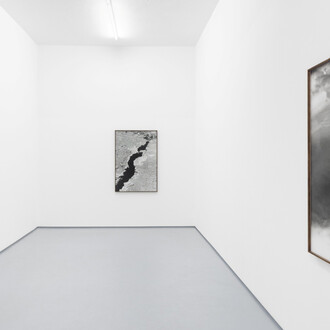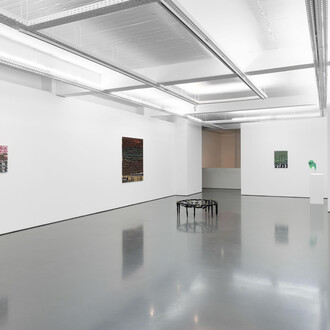In what might seem a time of increased uncertainties, there are more tools than ever to add a higher level of control and predictability over the otherwise progressively entropic web of life. The diverse technological means (techne in every aspect of the word), which vary in the degree of their detachment from our corporeality and the concurrent shift towards virtuality, nevertheless seem to fail in securing a stable, certain, preanticipated course of events. Ironically, the cumulative presence of technology made ephemerality and its pervasiveness all the more evident. It also distilled everything typically human that remains, regardless of the seemingly depleted landscape of machines and software: the intrinsic limitations of perception and affects.
“Admittedly, we are deceivable and deception-ready beings,” but this deception only applies to mediation through the senses that can be technically reproduced.1 However, the shared and often indistinguishable history of human sensoriality and technology suggest a thinning of the hardline division between sense perception and the condition of its absence within the mathematized sphere.
The nostalgia induced by the forgotten sound of television static, here through the already-nostalgic, everphantasmatic photographic imprint (the medium that brings us closest to death, still within life), gets bound up with the liminal acoustic trace left through the subtle, yet demanding manuality of rhythmic register carved by the hand: demanding in its asking for afforded intimacy and time – nothing less. The resonance of these vibrating cues stabilizes and almost mutes under the centrifugal vortex of the gaze that leads hypnotically not into anaesthesis, but rather into a methodically expanded spatial and perceptual terrain. The suggested Hypnosis, if not Thanatos, teased by the ocular suspension of the firm terrestrial references that would convey the feeling of still belonging – that is, of still being (here) – is in turn playfully subverted through the reconfigurations of the ordered, and then again disordered, paradigms of human structuring of space. Since the latter is always imbued with implicit codes – an inevitable condensation of our many systems of desires and beliefs – the only countermeasure left is to assume manipulation through poetics (humorous, if possible) which disrupts and destabilizes, to then reinvent. Among the frequencies, constructions, signs and signals that hover tentatively in a move away from ground, the centre of the gravity is still heavy and gathered in the compressed corporeal mass.
Beyond its metamorphic and kinetic implications, Shift + Enter is a keyboard shortcut used to create a new line within a paragraph, also called a “soft break”. There’s an exact digital encryption that defines the metrics of this break. Knowing the feel of the softness, though, is not reducible either to feats of linguistics, or to a derivative of any calculated order of signification, however sophisticated and complex. Rather, it can only be translated through the body’s encountering of weight.
(Text by Maša Tomšič)
Notes
1 Mersch, D. “What is Koinōnia under Technological Conditions?” In Actor and avatar: a scientific and artistic catalog, edited by D. Mersch, A. Rey, T. Grunwald, J. Sternagel, L. Kegel, and M. L. Loertscher. Bielefeld: transcript Verlag, 2023.












